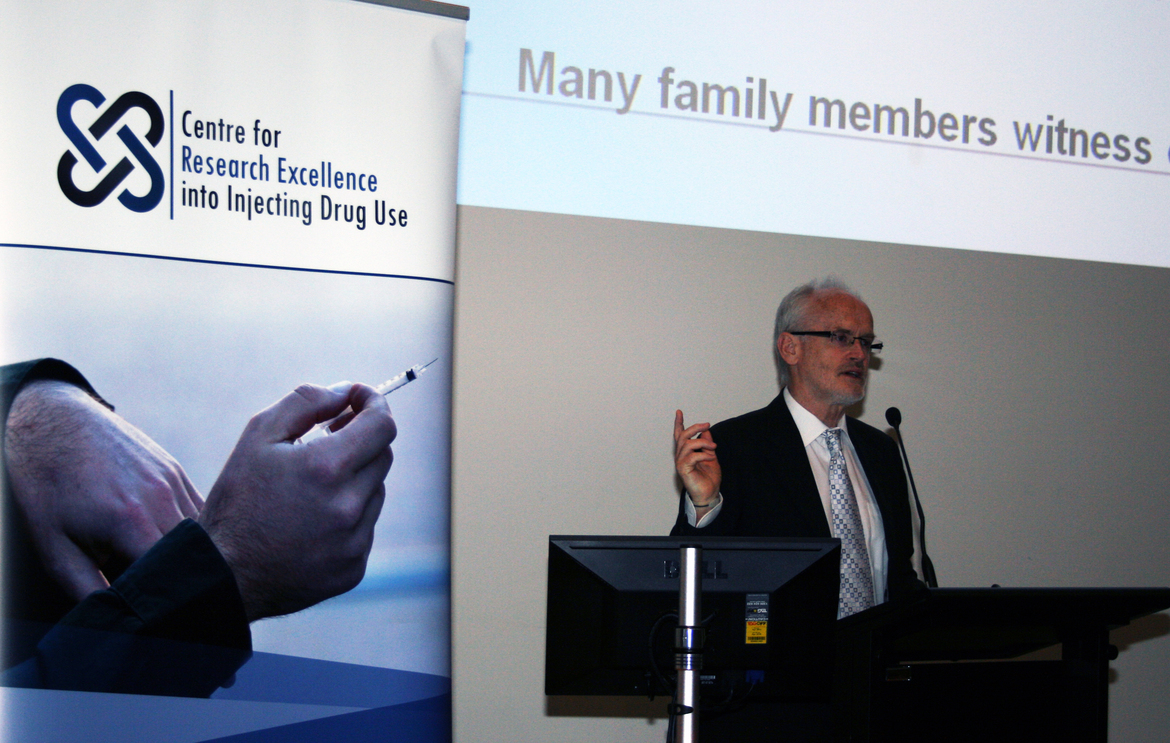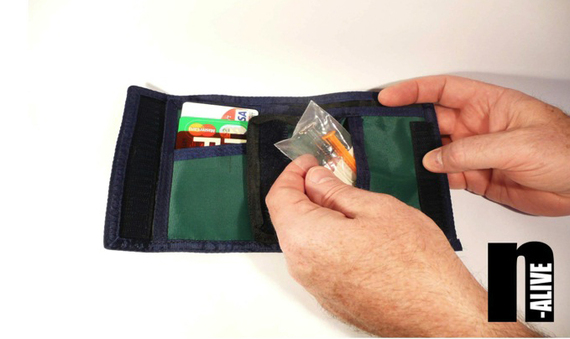

Naloxone,a simple-to-use drug that can prevent opioid overdose deaths was the focus of this year’s Centre for Research Excellence into Injecting Drug Use (CREIDU) Colloquium in Melbourne. It has been used for over 40 years in emergency medicine but is not available to peers, carers, non-medical health workers and family members of people who inject drugs in Australia.
Now available on prescription through Australia’s PBS scheme for as little as $5.90, the drug, according to an international expert, could prevent opiate overdose deaths if readily available to those witnessing overdose.
Keynote speaker, Professor John Strang from the National Addition Centre (NAC) at King’s College in London told the packed audience at this year’s CREIDU Colloquium that it was just inertia and perceived barriers to use that stood in the way of implementation.
“You can’t afford to continue to dither around this issue, you need to make naloxone available to those who potentially will witness overdose,” Professor Strang said.
“Overdose is frequently witnessed by friends or family members but they often feel they have little help. They do intervene actively but not always effectively.”
Australian and international data consistently show that people who inject drugs, particularly heroin and other opioids, frequently experience overdose. In Melbourne, for example, more than 60% of a sample of people who inject drugs reported having had at least one overdose; most of these people recognized the opportunity to intervene when they had come across overdoses, but needed additional support to intervene effectively.
Professor Strang said the NAC in London had responded to this overlooked intervention opportunity by training peers of people who inject drugs, as well as their carers and wider familes on how to respond to overdose through resuscitation training and supply of naloxone. This training in how to recognise overdose, manage the situation, and use naloxone whilst waiting for medical support is currently underway in the UK and many other parts of the world, including some Australian jurisdictions such as the ACT.
Another guest speaker, Nicole Wiggins from the Canberra Alliance for Harm Minimisation and Advocacy (CAHMA) highlighted how it can be done in Australia; CAHMA has conducted 22 education sessions about naloxone and overdose involving 132 people from priority populations who may witness or experience overdoses. Carrie Fowlie from the ACT Alcohol Tobacco and Other Drug Association, urged Victoria and other states to consider starting a peer-led education program about naloxone based on the successful ACT model led by CAHMA.
Key target populations of opioid users were identified to whom the distribution of naloxone could make a difference; people currently out-of-treatment, people about to leave treatment, those abstinent and in recovery, as well as those who have recently been released from prison.
Prisoners are particularly important according to Professor Strang:“In the first fortnight after prisoners are released there is an horrific death rate and they have a 40-50 time higher risk of dying through drug-related incidents during that time,” Professor Strang said.
The next step beyond education and wider access was to improve the device and the form of drug delivery.
“We are hoping that eventually people will have access to naloxone in a small kit form that can be carried in their wallet,” he said. “But in the meantime extending access to naloxone to those who may be able to help prevent an overdose death needs to happen.”
For more information about the Colloquium presentations click here.
You can’t afford to continue to dither around this issue, you need to make naloxone available to those who potentially will witness overdose
Professor John Strang, King’s College in London